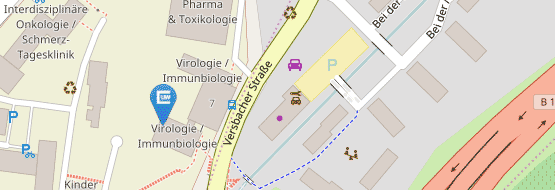Project P07
Role of NKG2D ligands for activation of the human cytomegalovirus specific immune response
Prof. Dr. Christine Falk & Prof. Dr. Martin Messerle
Solid organ transplant recipients with an insufficient HCMV memory T-cell response are at high risk of reactivating the virus and developing life-threatening complications due to immunosuppression. We hypothesize that HCMV-specific immune responses (NK and CD8+ T cells) can be boosted by viral expression of NKG2D ligands (NKG2D-L). The current lead virus candidate, TB40-ULBP2, overexpressing ULBP2 in infected cells, will be compared with the already available ULBP1-, MICA-, MICB-expressing viruses in terms of activation of NK cells and cytotoxic T cells (CTL) and the ability of these immune cells to most effectively limit virus spread. Underlying mechanisms will be determined by measuring activation and degranulation markers and secretion of cytokines. Additionally, we will use TCR transgenic Jurkat triple reporter cell lines expressing fluorochromes upon activation of the transcription factors NFAT, NF-kB, or AP-1 to identify TCR and costimulatory signals mediated by the various NKG2D-L-induced HCMV-specific T-cell responses. By coculturing infected fibroblasts with PBMC from HCMV-seropositive individuals, effects of NKG2D-mediated signaling on T-cell subpopulations differing in DNAM-1, TIGIT, and CD96 expression will be examined by phenotypic characterization, and on their activation and expansion. A combination of single-cell mRNA (scRNA-seq), CITE, and T-cell receptor sequencing (TCR-seq) will be used for precise molecular characterization of activated HCMV-specific CTL (e.g., HLA-A*02/NLV-specific CTL). Based on our current work on tissue-resident memory (TRM) T cells in the lung, we will delineate HCMV-specific T cells isolated from explanted lung tissue from patients with terminal lung failure. TRM-CTL (specific for HLA-A*02/NLV or other peptides) will be isolated via multimers and characterized by phenotyping and combined scRNA-seq, TCR-seq and CITE-seq. These TRM-CTL will be cocultured with NKG2D-L-expressing mutants, their DNAM-1, TIGIT, and PD-1 subsets analyzed, and compared with HCMV-specific circulating T cells. Based on these comparisons, we aim to define the optimal conditions for the development of TRM-related long-lived CTL.

